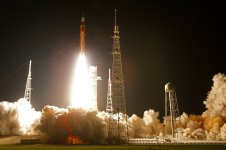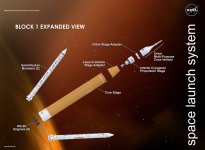MECO, separation, ignition and heading for orbit!
You are using an out of date browser. It may not display this or other websites correctly.
You should upgrade or use an alternative browser.
You should upgrade or use an alternative browser.
** The Official Space Flight Thread - The Space Station and Beyond **
- Thread starter Cosimo
- Start date
More options
View all postsSolar array deployment!
That was amazing and congratulations to all involved in the project. 
Job still not completed and what comes next:

Job still not completed and what comes next:
First Day
~12.5 hours: Midcourse correction burn (MCC1a)
~1 day: Release and motion test of the gimbaled antenna assembly
. . . and on
2 days: Midcourse correction burn (MCC1 b)
3 days: Forward sunshield pallet deployment
3 days: Aft sunshield pallet deployment
4 days: Deployable tower assembly
5 days: Aft momentum flap
5 days: Sunshield covers release
6 days: Sunshield port mid-boom and sunshield starboard mid-boom
7 days: Sunshield layer tensioning begins
8 days: Sunshield layer tensioning complete
10 days: Secondary mirror deployment begins and is completed
11 days: Aft Deployed Instrument Radiator
12 days: Port primary mirror wing deployment begins and is completed
13 days: Starboard primary mirror wing deployment begins and is completed
13 days: Webb is fully deployed
15-24 days: Individual mirror segment movements
29 days: Midcourse correction burn (MCC2)/L2 insertion burn
29.5 days: Orbit insertion complete
What next. The long journey to the moon and back:
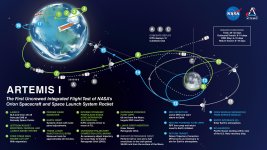
Today – the critical trans-lunar injection burn that will send Orion to the Moon. (08:14 GMT) and ICPS separation.
Flight Day 2-5 - Outbound transit
Flight day 6-9 - Transit to Distant Retrograde Orbit (DRO) around the Moon

Today – the critical trans-lunar injection burn that will send Orion to the Moon. (08:14 GMT) and ICPS separation.
Flight Day 2-5 - Outbound transit
Flight day 6-9 - Transit to Distant Retrograde Orbit (DRO) around the Moon
- Flight Day 6 (11/21): Outbound Powered Fly-by (burn 7:44 a.m.), Lunar Closest Approach (~60 miles)
- Flight Day 10 (11/25): DRO Insertion (burn 4:52 p.m.)
- Flight Day 11 (11/26): Orion passes Apollo 13 Record (8:42 a.m.)
- Flight Day 13: (11/28): Orion reaches maximum distance from Earth at approximately 298,565 miles (4:05 p.m.)
- Flight Day 16 (12/1): DRO Departure (burn 4:53 p.m.)
- Flight Day 20 (12/5): Return Flyby (burn 11:28 a.m.), Second Closest
- Flight Day 26 (12/11): Splashdown (12:40 p.m.)
Last edited:
We are on the way to the moon:
The interim cryogenic propulsion stage (ICPS) completed its approximately 18-minute trans-lunar injection (TLI) burn and the spacecraft has separated from the stage. Orion fired its auxiliary thrusters to move a safe distance away from the expended stage and the spacecraft is on its way to the Moon.
Some live views:Think there are around 16 cameras or so on Orion, in many different locations so hopefully we get some great footage, assuming Orion survives reentry.
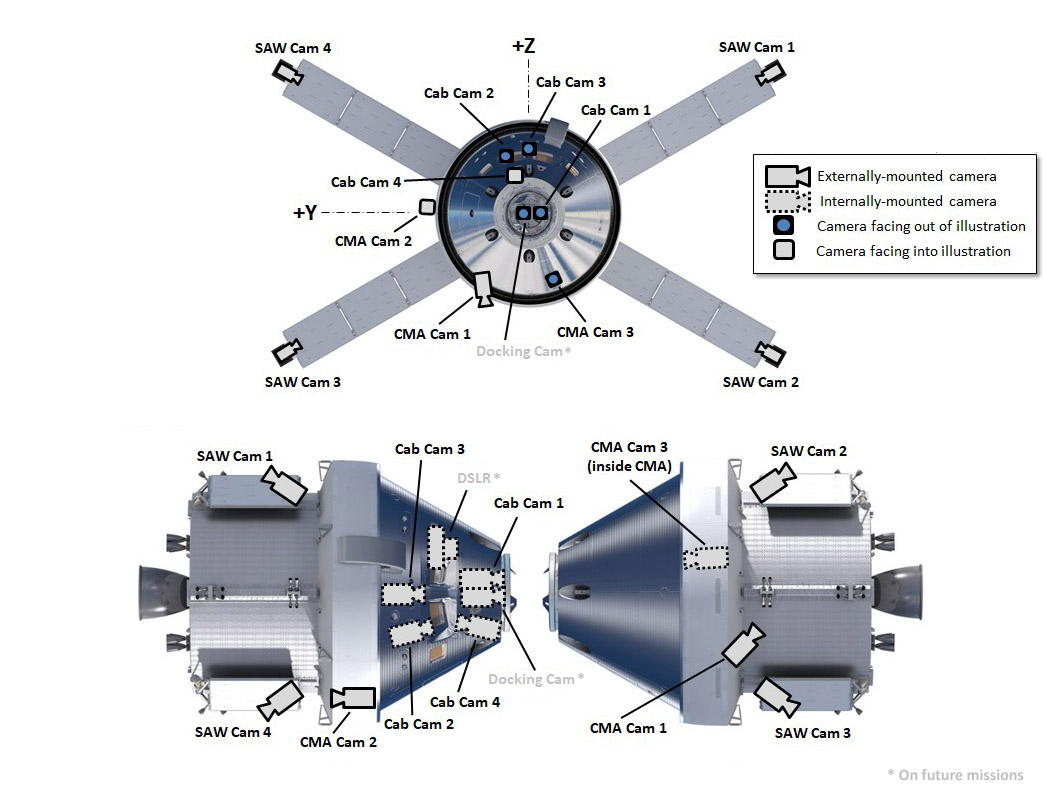
NASA’s Artemis I Cameras to Offer New Views of Orion, Earth, Moon - NASA
During Artemis I, NASA’s Space Launch System (SLS) rocket will send the agency’s Orion spacecraft on a trek 40,000 miles beyond the Moon before returning towww.nasa.gov
Arrival at the moon.
We should have some video after this.The outbound powered flyby will begin at 1244 , with Orion’s closest approach to the Moon targeted for 1257, when it will pass about 80 miles above the lunar surface. Engineers expect to lose communication with the spacecraft as is passes behind the Moon for approximately 34 minutes starting at 1226.The Goldstone ground station, part of NASA’s Deep Space Network, will acquire the spacecraft once it emerges from behind the Moon.
Last edited:
These type of images of earth always remind me of this:
Look again at that dot. That's here. That's home. That's us. On it everyone you love, everyone you know, everyone you ever heard of, every human being who ever was, lived out their lives. The aggregate of our joy and suffering, thousands of confident religions, ideologies, and economic doctrines, every hunter and forager, every hero and coward, every creator and destroyer of civilization, every king and peasant, every young couple in love, every mother and father, hopeful child, inventor and explorer, every teacher of morals, every corrupt politician, every "superstar," every "supreme leader," every saint and sinner in the history of our species lived there--on a mote of dust suspended in a sunbeam.
The Earth is a very small stage in a vast cosmic arena. Think of the rivers of blood spilled by all those generals and emperors so that, in glory and triumph, they could become the momentary masters of a fraction of a dot. Think of the endless cruelties visited by the inhabitants of one corner of this pixel on the scarcely distinguishable inhabitants of some other corner, how frequent their misunderstandings, how eager they are to kill one another, how fervent their hatreds.
Our posturings, our imagined self-importance, the delusion that we have some privileged position in the Universe, are challenged by this point of pale light. Our planet is a lonely speck in the great enveloping cosmic dark. In our obscurity, in all this vastness, there is no hint that help will come from elsewhere to save us from ourselves.
The Earth is the only world known so far to harbor life. There is nowhere else, at least in the near future, to which our species could migrate. Visit, yes. Settle, not yet. Like it or not, for the moment the Earth is where we make our stand.
It has been said that astronomy is a humbling and character-building experience. There is perhaps no better demonstration of the folly of human conceits than this distant image of our tiny world. To me, it underscores our responsibility to deal more kindly with one another, and to preserve and cherish the pale blue dot, the only home we've ever known.
— Carl Sagan, Pale Blue Dot, 1994
Last edited:
One of the lunar surface:
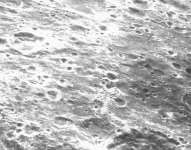
One of the earth:


On the sixth day of the Artemis I mission, Orion's optical navigation camera was commanded to take this black-and-white photo of the lunar surface. Orion uses the optical navigation camera to capture imagery of the Earth and the Moon at different phases and distances, providing an enhanced body of data to certify its effectiveness under different lighting conditions as a way to help orient the spacecraft on future missions with crew.
One of the earth:

On the second day of the 25.5-day Artemis I mission, Orion used its optical navigation camera to snap black and white photos of planet Earth. Orion uses the optical navigation camera to capture imagery of the Earth and the Moon at different phases and distances, providing an enhanced body of data to certify its effectiveness as a method for determining its position in space for future missions under differing lighting conditions
Last edited:
Home sweet home:
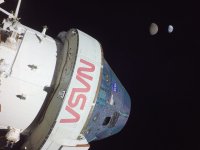

(Nov. 28, 2022) On flight day 13, Orion reached its maximum distance from Earth during the Artemis I mission when it was 268,563 miles away from our home planet. Orion has now traveled farther than any other spacecraft built for humans. The spacecraft also captured imagery of Earth and the Moon together throughout the day, including of the Moon appearing to eclipse Earth.
Artemis 1, Orion spacecraft is set for return to Earth on this Sunday (December 11th). The return to earth starts at 16:00 UTC The capsule will splash down near Guadalupe Island, Pacific Ocean, south of the primary landing area at around 17:40 UTC (12:40 p.m. ET).
The mission has come to a successful end as Orion landed in the Pacific!
Telemetry is telling JAXA that the panels are pointing west hence the lack of power. The battery is at 12% and has been shutdown leaving room for a restart if necessary.Solar panels don't seem to be active
JAXA have said that if sunlight begins to shine on the lunar surface from the west there may be a possibility of generating power and a restart.
I hope they can get a lot done before lunar night comes along as may put an end to it.Looks like they managed to switch it off and on again!

Japan: Moon lander Slim comes back to life and resumes mission
The lander has begun sending photos, including that of a nearby rock nicknamed "toy poodle".www.bbc.co.uk
Tomorrow the Intuitive Machines' IM-1 mission will send the Nova-C lander Odysseus to the moon on a 16-day mission. This will be the first attempt at a private landing on the moon and the first U.S. landing on the lunar surface since Apollo 17 in 1972.
Launch will be 14th Feb at from NASA's Kennedy Space Center atop a Falcon 9 rocket. Liftoff is scheduled for 12:57 a.m. EST (0557 GMT).
The Odysseus is expected to land on the moon on 22 Feb.
Live coverage:
The IM-1 Mission site:

NASA's livestream of the IM-1 launch will begin shortly before liftoff at 12:15 a.m. EST (0515 GMT) and will be broadcast on NASA TV, NASA+ and the agency's other social media sites.
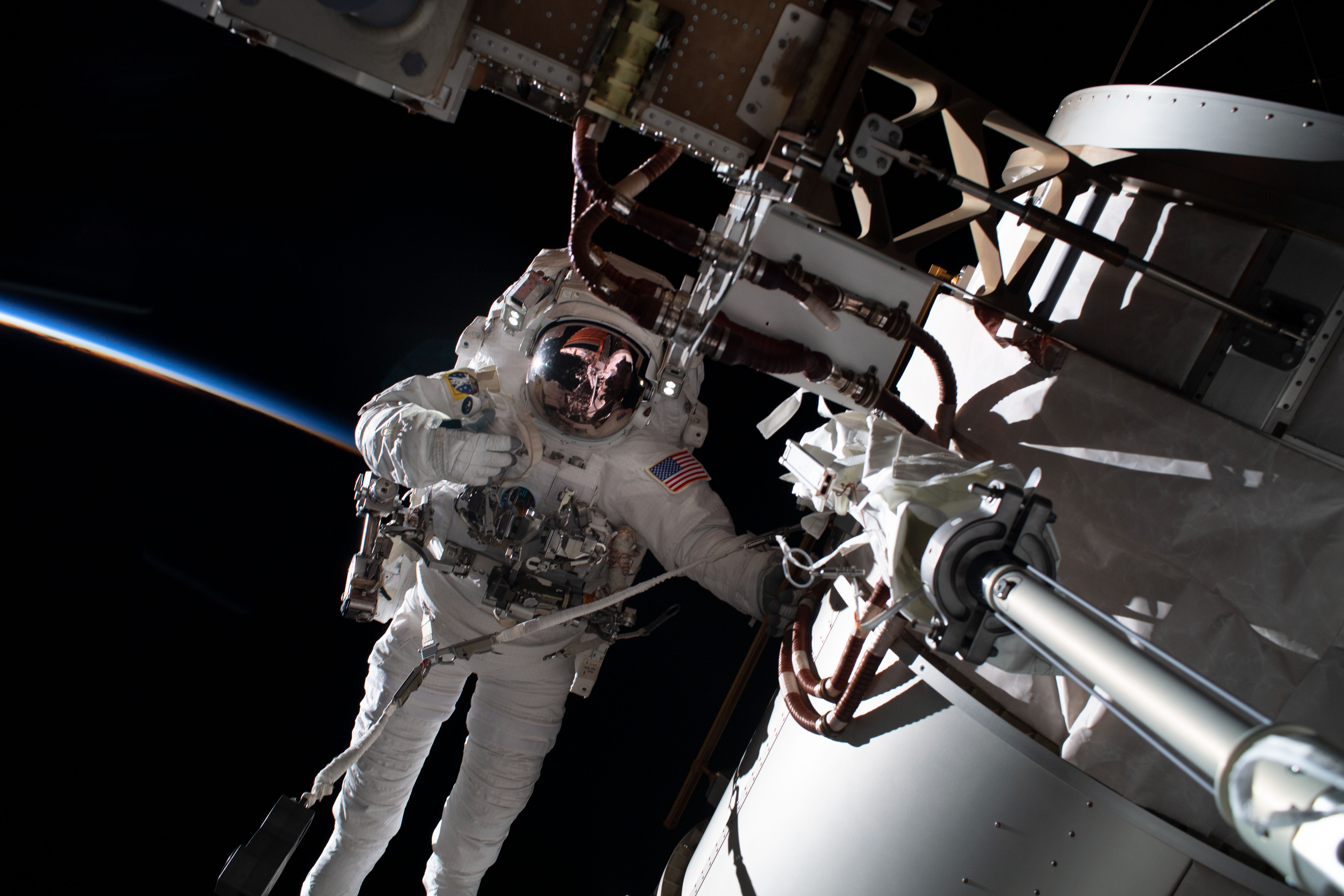
 www.nasa.gov
www.nasa.gov
SpaceX will host its own livestream of the launch on the SpaceX X account
Press kit:
Launch will be 14th Feb at from NASA's Kennedy Space Center atop a Falcon 9 rocket. Liftoff is scheduled for 12:57 a.m. EST (0557 GMT).
The Odysseus is expected to land on the moon on 22 Feb.
Live coverage:
The IM-1 Mission site:

NASA's livestream of the IM-1 launch will begin shortly before liftoff at 12:15 a.m. EST (0515 GMT) and will be broadcast on NASA TV, NASA+ and the agency's other social media sites.

NASA TV Live - NASA
NASA TV live: Watch live broadcasts from NASA Television and NASA's social media channels, and a schedule of upcoming live events including news briefings, launches and landings.
SpaceX will host its own livestream of the launch on the SpaceX X account
Press kit:
Methane issues delay launch until tomorrow at 1:05 a.m. EST (0605 GMT).
We are go this morning and propellant load of Falcon 9 is taking place.


